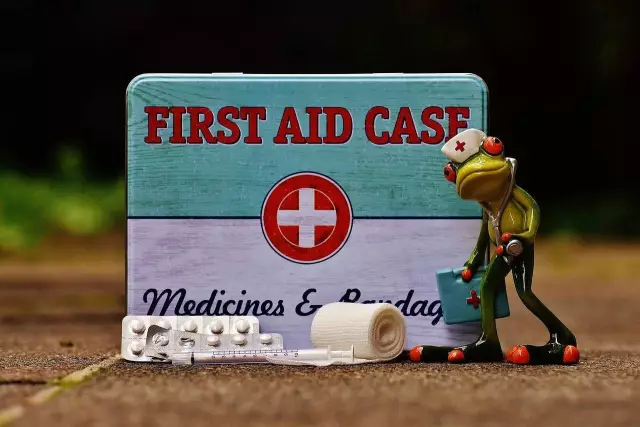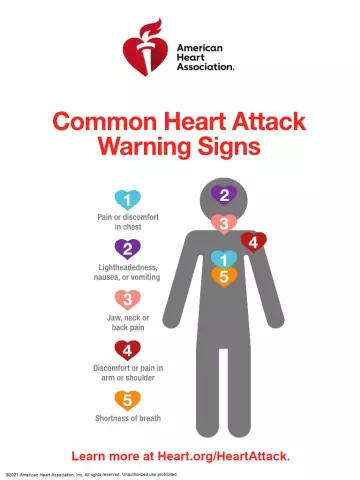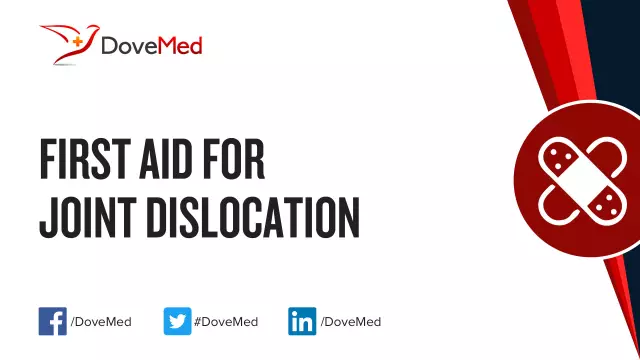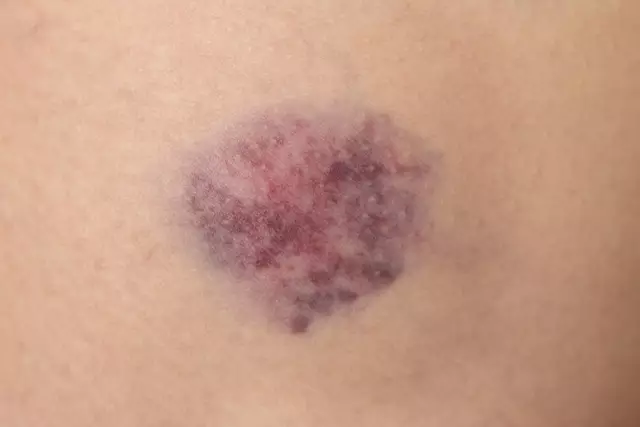- Author Rachel Wainwright [email protected].
- Public 2023-12-15 07:39.
- Last modified 2025-11-02 20:14.
First aid in case of accidents

In our daily life, we are often faced with situations where immediate first aid is required in case of accidents, without waiting for the arrival of a doctor. Therefore, every home must have a small first-aid kit with dressing material, ointment for burns, tincture of iodine and some medications.
First aid in case of accidents is a set of temporary measures taken to alleviate the suffering of the victim, prevent the development of additional injuries in him and save his life until specialized medical assistance is provided.
First aid in case of accidents: general rules
In case of an accident, first aid must be provided in the following order:
- Call the ambulance brigade;
- Make sure that the victim and you are not in danger when providing assistance;
- If possible, try not to move the victim to another location. Help him at the scene. If this is not possible, then carry it extremely carefully and carefully;
- If the victim vomits, he must be turned on his side. In this case, the likelihood of getting vomit into the respiratory tract is reduced;
- Check if the victim is breathing and has a pulse. If there is cardiac arrest and respiratory arrest, immediately begin to carry out resuscitation measures (artificial respiration "mouth-to-mouth" or "mouth-to-nose", chest compressions). Resuscitation should be carried out without interruption until the victim regains spontaneous breathing and heartbeat, or until a doctor arrives. The reason for the termination of resuscitation measures is the biological death of the victim, which can only be ascertained by a doctor;
- Protect the victim from precipitation. In the cold season, be sure to cover it, and in the heat, move it to the shade;
- If there is bleeding, take all the necessary measures to stop it (hemostatic tourniquet, pressure bandage);
- Treat the edges of the wounds with ethyl alcohol, tincture of iodine or brilliant green. Apply a sterile dressing to the wound;
- In case of limb fracture, apply a splint that can be made from scrap materials;
- Choose the most optimal way to transport the victim to the hospital.
First aid for various conditions

The complex of measures in providing first aid in case of accidents is individual in each case and depends on the nature of the injury, as well as on the general condition of the victim. We list the most common situations and first aid for them:
- Loss of consciousness. Make sure the victim is breathing and has cardiac activity. If there is no breathing and no pulse, start CPR immediately;
- Bleeding. Bleeding that is insignificant in strength can be stopped by applying a pressure bandage. With arterial bleeding (blood flows out of the wound in jerks and has a bright scarlet color), it is necessary to apply a hemostatic tourniquet above the wound. As it, you can use a wide piece of fabric, twisted in the form of a rope. Do not use wire, stockings, nylon or ropes! Be sure to place a note under the tourniquet indicating the exact time it was applied. In the summer, the tourniquet cannot be kept for more than two hours, and in the winter it can be applied for a maximum of an hour;
- Chest wounds. With penetrating wounds of the chest cavity, air begins to penetrate into the pleural cavity. This leads to the fact that the lung begins to shrink, the so-called collapse of the lung develops. To prevent this, an occlusive dressing is applied to the entrance hole. To do this, a clean piece of plastic film is applied to the wound and glued to the skin from all sides with an adhesive plaster; The victim should be transported lying on the affected side;
- For abdominal injuries, a sterile bandage should be applied to the wound; If the intestinal loops have fallen out, then in no case should you try to set them back on your own. The victim should not be allowed to drink, eat, smoke;
- To relieve burn pain, water the affected area with cold water until the pain subsides. Do not pull off any clothing adhering to your skin. Just cut it around with scissors. The resulting bubbles cannot be pierced. Apply a sterile bandage to the burned surface and take the victim to a hospital;
- In case of frostbite, the victim should be brought in or brought into a warm room. The affected skin areas are rubbed with vodka until a pink color appears. Never rub frostbite areas with snow, as sharp ice edges will additionally injure the skin. As a result, microscopic wounds are formed on it, which are the entrance gate for infection;
- In case of poisoning, it is necessary to wash the stomach with the "restaurant method". To do this, the victim is given 1.5 - 2.0 liters of warm water to drink, after which they artificially induce vomiting, irritating the root of the tongue with the fingers. Gastric lavage of an adult requires approximately 10.0 liters of water. The last portion of the wash water should be practically clean and free from food debris. After washing, you can give a suspension of activated carbon to drink (grind 6 tablets into powder and stir the resulting powder in a glass of water).
First aid in case of accidents: safety
There is nothing dearer than human life. And therefore, the desire of each person to provide assistance to the victim is understandable, and maybe even to save his life. But before you start providing first aid in an accident, think about your own safety.
For example, if the victim was struck by an electric shock, then before approaching him, you must turn off the current. If it is impossible to do this, remove the contact wire from the victim's body using any long wooden, and, most importantly, dry stick! Until you remove the wire or turn off the electrical current, do not touch the victim, because otherwise, you yourself will need first aid in the event of an accident.
If you are helping people with carbon monoxide poisoning, then first of all you should take care not to become victims of poisoning yourself. To do this, ensure the flow of fresh air into the room by opening windows and doors in it. If this is not possible (in case of a fire, in a mine, etc.) and it is not possible to work in a gas mask, then put on a mask made of several layers of cloth well moistened with water on your face. Remove the victim to fresh air as soon as possible and leave the danger area yourself. Only after that you can proceed directly to providing him with first aid.
Caution should also be observed when assisting a person in a state of acute psychosis. In this state, he is able to inflict serious injuries not only on himself, but also on people who want to help him.
Found a mistake in the text? Select it and press Ctrl + Enter.






